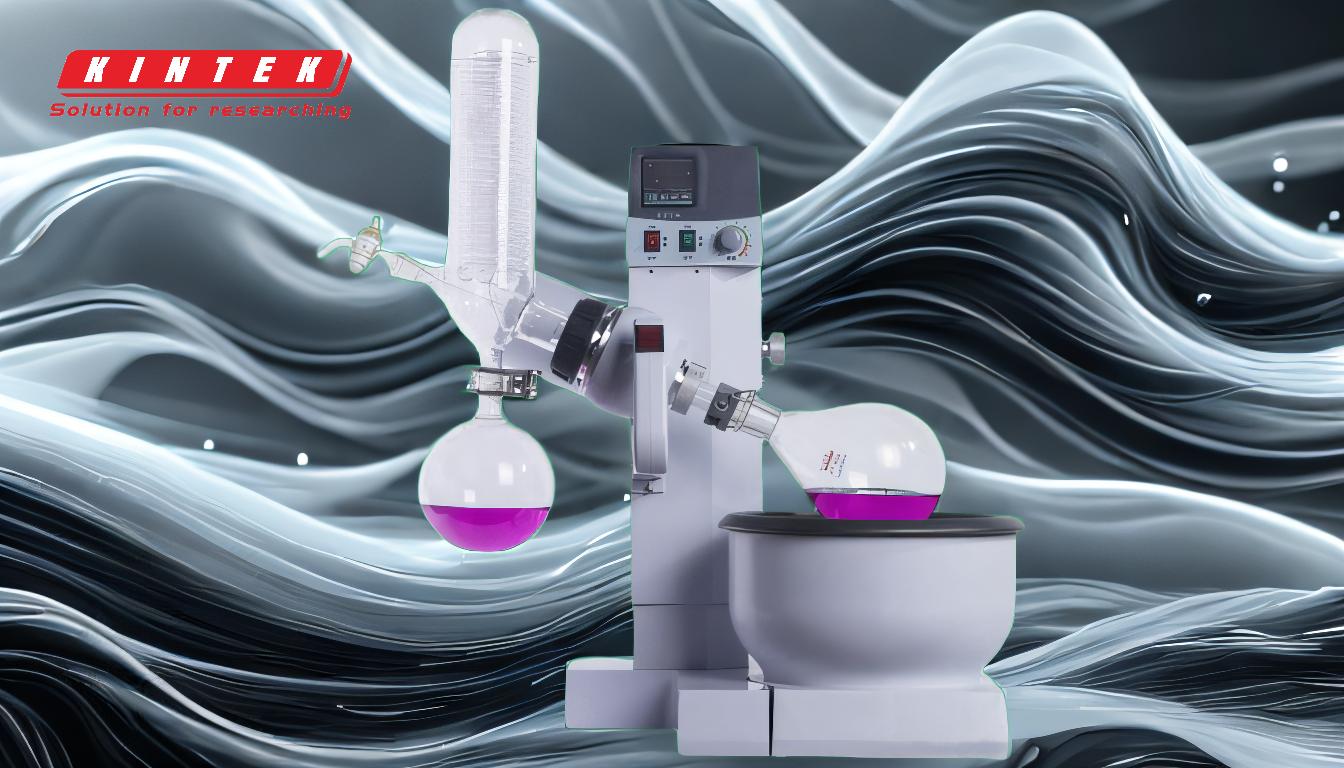Rotary evaporation is a laboratory technique used to remove solvents from samples by gently evaporating and condensing them under reduced pressure. The process involves rotating a flask containing the sample in a heated water bath, creating a thin film that increases the evaporation surface area. The pressure is reduced using a vacuum pump, lowering the boiling point of the solvent, which allows evaporation to occur at lower temperatures. The duration of rotary evaporation depends on factors such as the solvent type, sample volume, temperature, vacuum level, and rotation speed. Typically, the process can take anywhere from a few minutes to several hours, depending on these variables.
Key Points Explained:

-
Process Overview:
- Rotary evaporation is a process where a sample is rotated in a flask under reduced pressure and elevated temperature to facilitate the evaporation of solvents.
- The rotation creates a thin film of the sample, increasing the surface area and enhancing the evaporation rate.
-
Key Components:
- Rotating Flask: Holds the sample and is rotated to form a thin film.
- Water Bath: Heats the sample to a controlled temperature (e.g., 30-40°C).
- Vacuum Pump: Reduces the pressure inside the system, lowering the boiling point of the solvent.
- Condenser: Cools the evaporated solvent, causing it to condense back into liquid form for collection.
-
Factors Affecting Duration:
- Solvent Type: Different solvents have different boiling points and evaporation rates. For example, ethanol evaporates faster than water.
- Sample Volume: Larger volumes take longer to evaporate compared to smaller volumes.
- Temperature: Higher temperatures in the water bath can speed up evaporation but must be balanced to avoid sample degradation.
- Vacuum Level: A stronger vacuum lowers the boiling point more significantly, allowing for faster evaporation.
- Rotation Speed: Faster rotation speeds create a thinner film, increasing the surface area and evaporation rate.
-
Typical Parameters:
- Water Bath Temperature: 30-40°C
- Condenser Temperature: -10°C to 0°C
- Rotation Speed: 150-200 rpm
- Flask Fill Level: Typically filled to 50% of its volume to allow proper film formation.
-
Process Duration:
- Short Duration (Minutes): For small volumes of highly volatile solvents (e.g., ethanol, acetone).
- Medium Duration (30 Minutes to 1 Hour): For moderate volumes of moderately volatile solvents (e.g., methanol, isopropanol).
- Long Duration (Several Hours): For large volumes or less volatile solvents (e.g., water, DMSO).
-
Applications:
- Solvent Removal: Efficiently removes solvents from samples without degrading heat-sensitive compounds.
- Concentration: Concentrates samples by removing excess solvent, useful in analytical chemistry and sample preparation.
- Distillation: Separates solvents from mixtures based on their boiling points.
-
Advantages:
- Gentle Evaporation: Operates at lower temperatures, preserving the integrity of heat-sensitive samples.
- Efficiency: Rapid evaporation due to increased surface area and reduced pressure.
- Versatility: Can handle a wide range of solvents and sample types.
-
Considerations for Purchasers:
- Capacity: Choose a rotary evaporator with a flask size appropriate for your typical sample volumes.
- Vacuum Pump: Ensure the vacuum pump can achieve the necessary pressure reduction for your solvents.
- Temperature Control: Look for precise temperature control in the water bath and condenser.
- Rotation Speed: Variable rotation speeds allow for optimization based on sample and solvent type.
In summary, the duration of rotary evaporation varies based on several factors, including the solvent type, sample volume, and operational parameters like temperature and vacuum level. By understanding these factors, users can optimize the process for their specific needs, ensuring efficient and effective solvent removal.
Summary Table:
| Factor | Impact on Duration |
|---|---|
| Solvent Type | Highly volatile solvents (e.g., ethanol) evaporate faster than less volatile ones (e.g., water). |
| Sample Volume | Larger volumes take longer to evaporate compared to smaller volumes. |
| Temperature | Higher temperatures speed up evaporation but must avoid sample degradation. |
| Vacuum Level | Stronger vacuum lowers boiling points, allowing faster evaporation. |
| Rotation Speed | Faster speeds create a thinner film, increasing evaporation rate. |
Need help optimizing your rotary evaporation process? Contact our experts today for tailored solutions!











